FLORAL AND FAUNAL IMAGERY: EMBODIMENTS OF REGIONAL AESTHETICS AND THE OBSERVATION OF NATURE
The floral and faunal motifs in Shiwan ceramics, including trompe l’oeil pottery, are primarily drawn from the natural features of the Lingnan region. Local specialities like lychees and pomegranates are regularly featured in pottery works, as well as auspicious symbols like magpies and lions. These motifs relate to daily life and carry much significance. For instance, pomegranates symbolise ‘many children and blessings’, while the imagery of ‘magpies perching on plum blossoms’ represents joy and good fortune in a Chinese idiom. These metaphors reflect the Lingnan people’s aspirations for a beautiful life.
Shiwan ceramics also played a significant role in folk and religious practices. For example, pottery fruits were offered to ancestors as a gesture of remembrance and respect. The bird and beast sculptures on roof ridges, such as the ‘ao yu’ (dragon fish) and lions, were believed to expel evil spirits while also being used simply as decorative pieces. Trompe l’oeil pottery items, such as small water pots moulded in the shape of Buddha’s hand and lotus leaf-shaped ‘brush shaper’, were charming decorations crafted for the desks of the literati.
In terms of technique, Shiwan’s potters demonstrated remarkable creativity. Methods like the ‘fetal hair technique’ involved using fine needle-like tools to engrave intricate lines directly onto the clay body, imitating the texture of a bird’s down feathers or a highly detailed plant pattern. The duck figurines crafted by master potters like Huang Bing and Huang Guzhen, as well as the ox pieces created by Huo Jin, exemplify this technique perfectly. The ducks, for instance, appear completely remarkably lifelike due to the detailing on each layer of feather. Various techniques were also applied to enhance the artistic appeal of these pieces.
The floral and faunal elements in Shiwan ceramics and trompe l’oeil pottery pieces convey Lingnan’s regional aesthetics and cultural spirit. They represent the Lingnan culture and reflect the potters’ great wisdom gathered through their detailed observations of nature.

White Propitious Beast
Huang Bing
Late Qing dynasty (1851 – 1911)
Height ︰ 19.5 cm
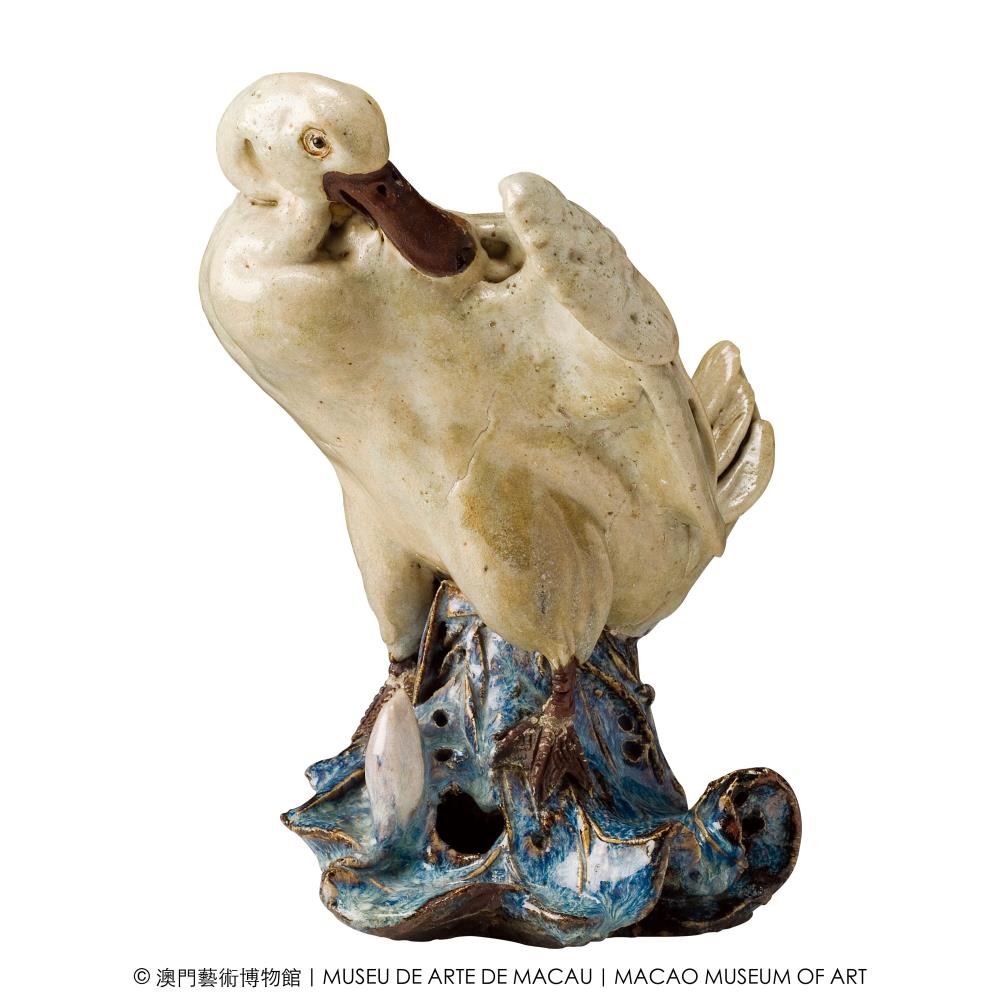
Duck on Lotus Leaf
Anonymous
Late Qing dynasty (1851 – 1911)
Height ︰ 30 cm
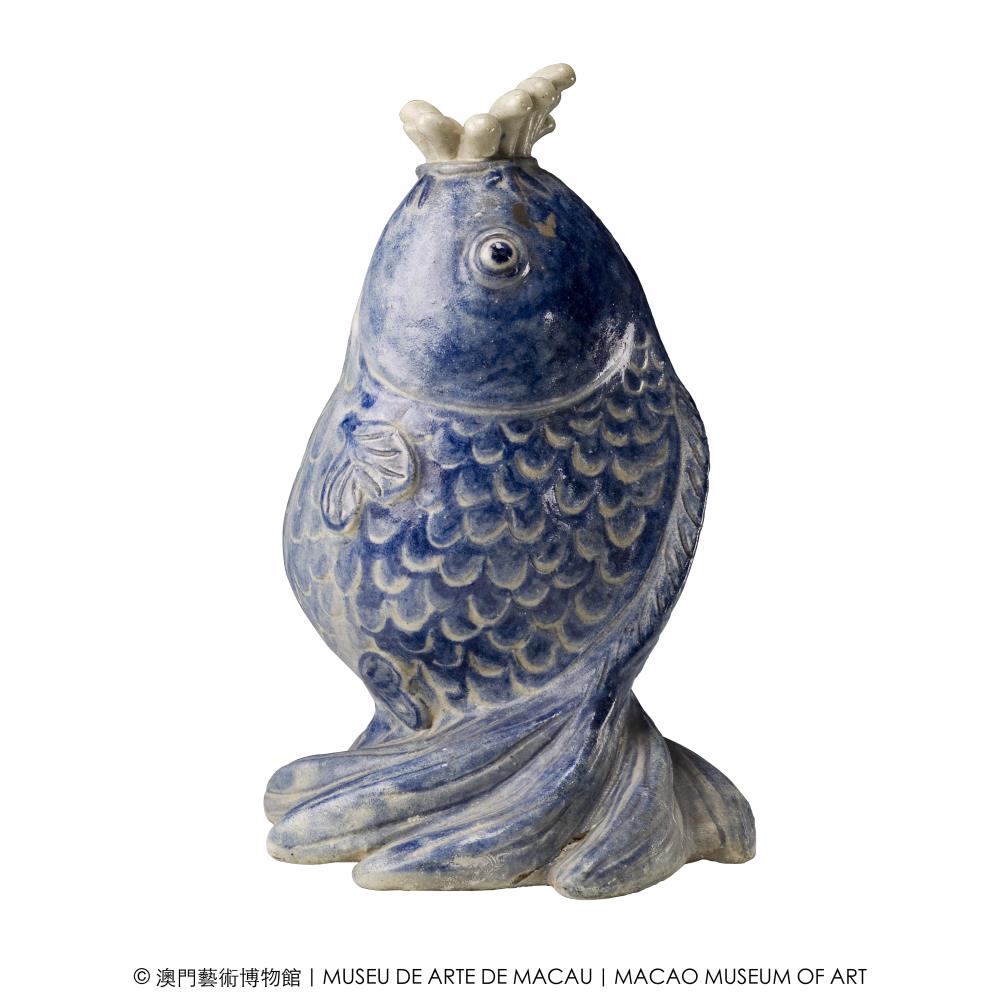
Carp
Anonymous
Early 20th century
Height ︰ 25 cm
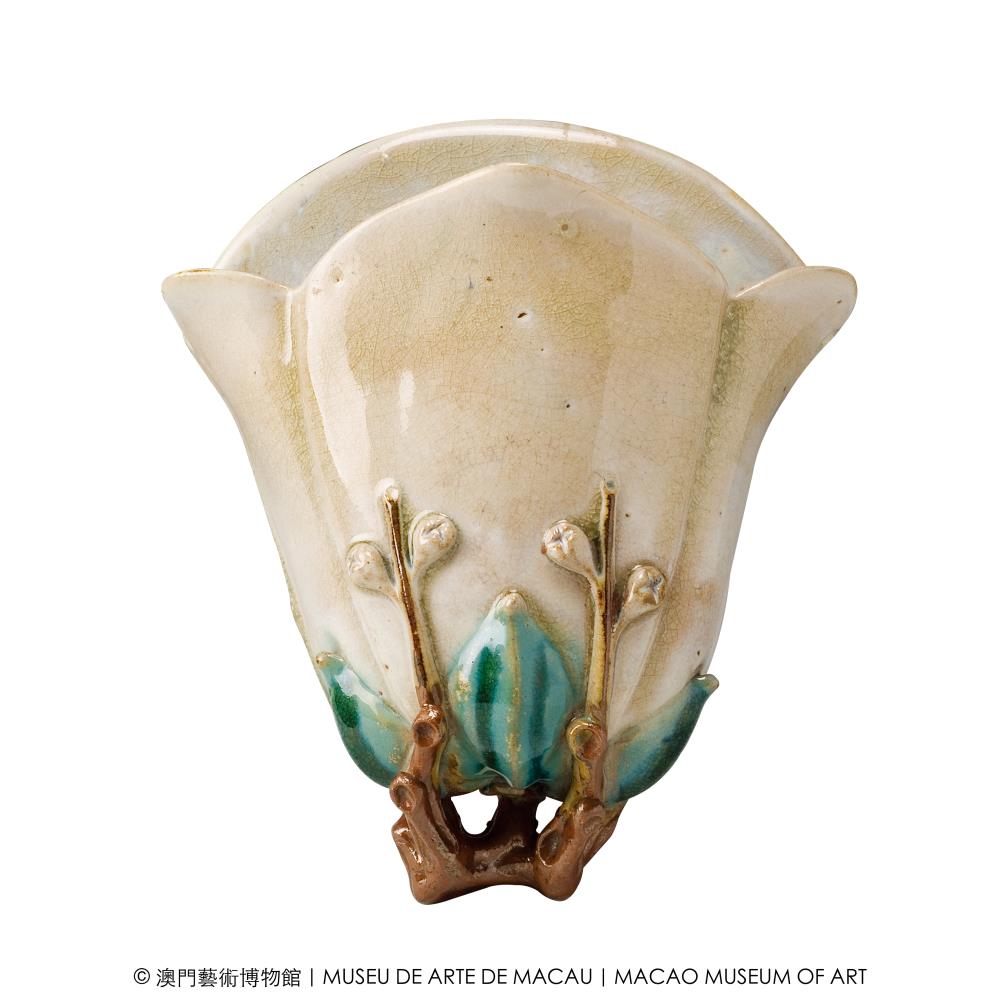
Magnolia Wall Decoration
Anonymous
Late Qing dynasty (1851 – 1911)
Height ︰ 33 cm
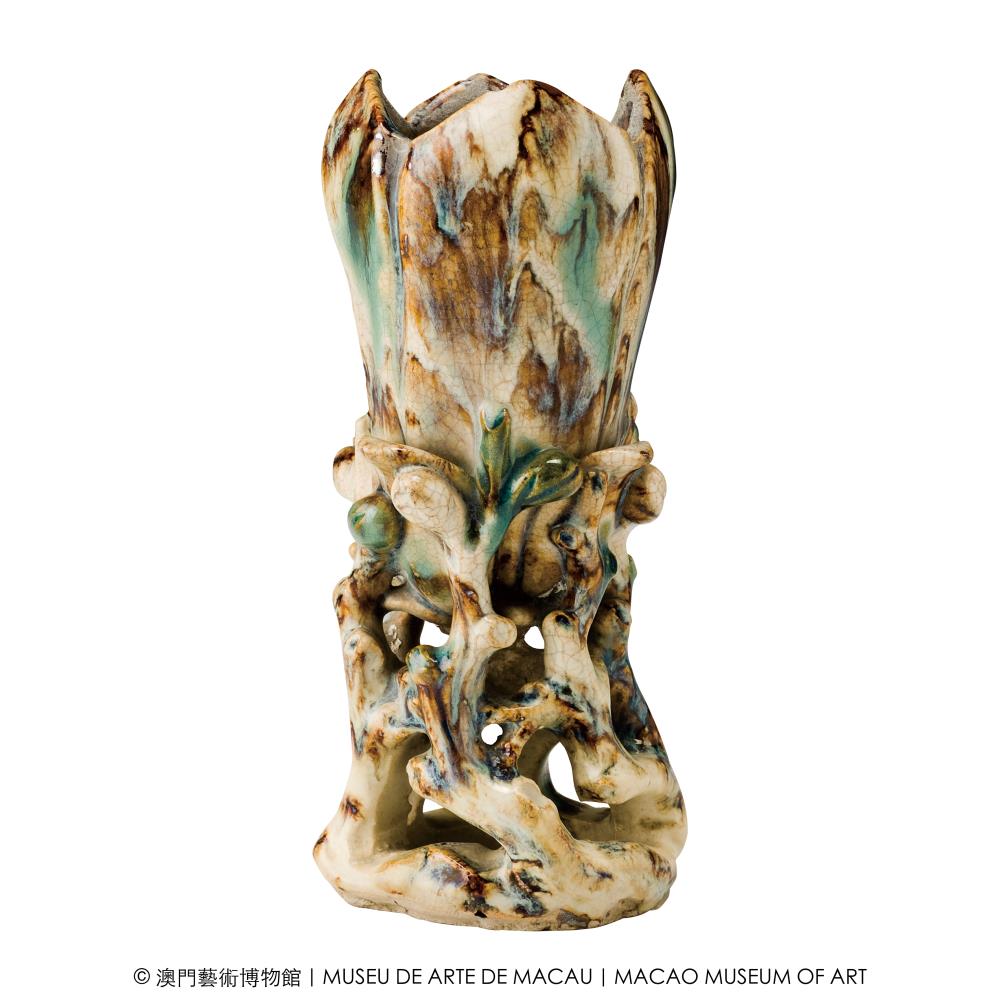
Magnolia-Shaped Vase
Anonymous
Late Qing dynasty (1851 – 1911)
Height ︰ 15 cm
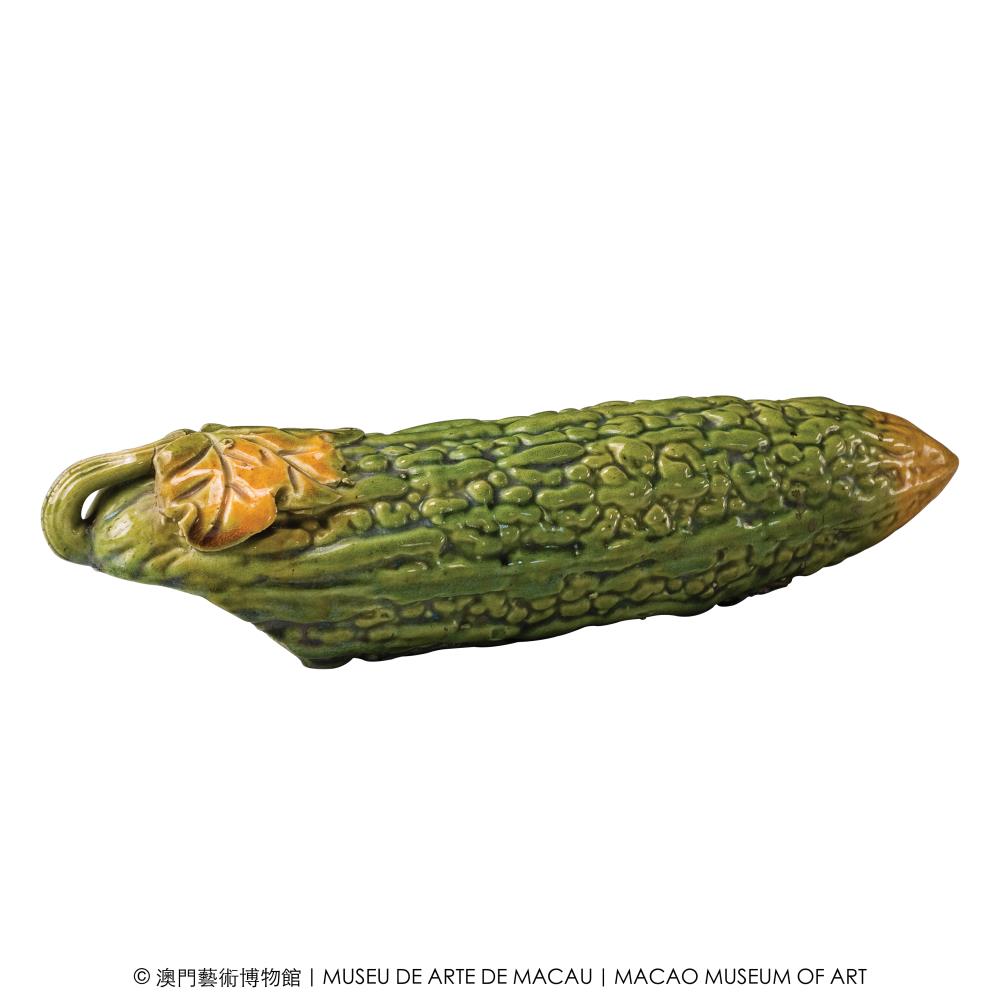
Bitter Melon Wall Decoration
Anonymous
Late Qing dynasty (1851 – 1911)
Length ︰ 26 cm